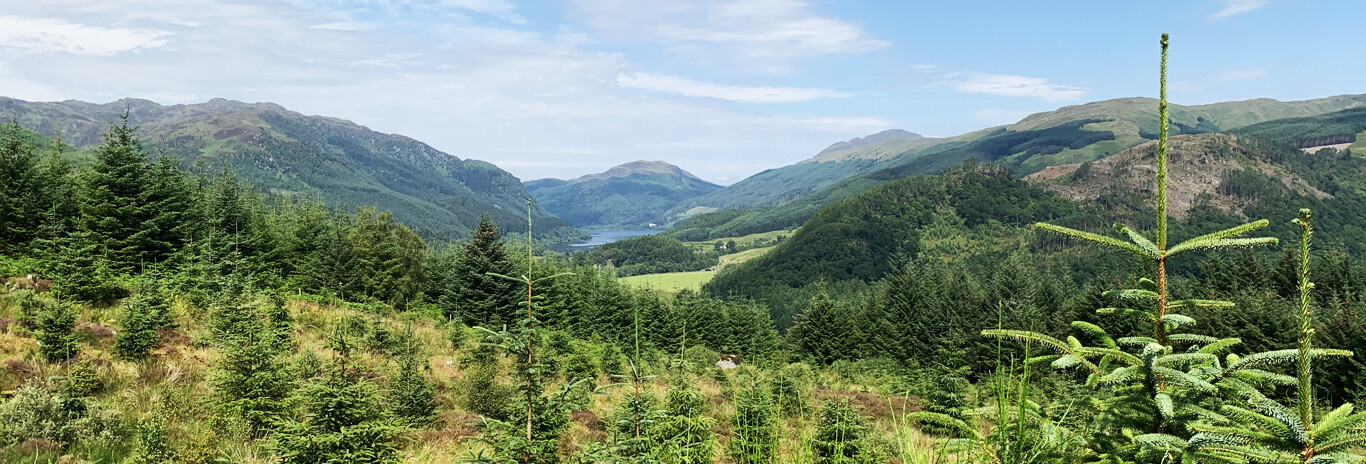Comrie
Comrie is located on the A85 road between Crieff and St Fillans in Highland Perthshire. It is 6 miles from Crieff upon which it relies for most main retail facilities although there are some convenience stores, restaurants and cafes within the village. A narrow road leads north from Comrie to Glen Lednoch and Loch Lednoch reservoir with its dam. To the south another road leads to Glen Artney which carries an old drovers track toward Callander in The Trossachs. Five miles to the west on the A85 trunk road is St Fillans in its picturesque setting at the east end of Loch Earn. The famous Deil's Cauldron and Wee Cauldron at Comrie was formed by the river Lednock cascading down from higher reaches above Glen Lednock. Both falls are accessible with viewing platforms.
Comrie is an ideal base from which to explore Stathearn, Perthsire, the Scottish Highlands, Perth and Stirling. Even Edinburgh and Glasgow are easy trips. Located in the very centre of Scotland on the A85 between Perth & Crianlarich, Comrie is an ideal base for drives into Perthshire, Stirlingshire, Loch Lomond, The Trossachs and beyond.There are glorious walks to suit all abilities, good fishing is found locally as well as further afield. The local lanes and roads are wonderful for biking and there are plenty off-road tracks to suit the more adventurous.
Golf is a way of life in Perthshire with around 40 courses and there are courses in the county ranging from our own local 9 hole course to the world-class championship courses at Gleaneagles, a half hour's drive away.
The focal point of the Comrie is the "White Church". Previously a historic church, the building was refurbished and opened as "Comrie Community Centre" on 16th September 2000.
History
The 'White Church' was built in 1805 over the site of another ancient churchyard; the centrepiece of the village and a Grade A listed building.
To the south of the village is a military camp at Cultybraggan. During World War II this was POW Camp 21 and housed Italian and later German prisoners of war. Within the grounds of the former POW camp there is a two story nuclear bunker which was the proposed emergency location of the provincial Scottish government during a nuclear attack. The bunker had its own accommodation, telephone exchange, sewage plant and even a BBC studio as late as the 1990s.
More recently in 2007 the local community trust bought the camp, and the surrounding 90 acres for the sum of £350,000.
Comrie gained fame in the late 19th century as the 'Shakey Toun' as it is very close to the Highland Boundary fault line which defines the edge of the highlands. Being so close to the line means it has been experiencing earth tremors for many centuries. These were first noted in 1597 and a major series of 70 shocks were noted in 1789. Comrie's Earthquake House, built in the 1870s, was the first purpose-built seismological observatory in the world. The building was originally constructed to house a simple device for marking when an earthquake had occurred.
A replica of this device now stands next to an example of modern earthquake monitoring equipment
Comrie is an ideal base from which to explore Stathearn, Perthsire, the Scottish Highlands, Perth and Stirling. Even Edinburgh and Glasgow are easy trips. Located in the very centre of Scotland on the A85 between Perth & Crianlarich, Comrie is an ideal base for drives into Perthshire, Stirlingshire, Loch Lomond, The Trossachs and beyond.There are glorious walks to suit all abilities, good fishing is found locally as well as further afield. The local lanes and roads are wonderful for biking and there are plenty off-road tracks to suit the more adventurous.
Golf is a way of life in Perthshire with around 40 courses and there are courses in the county ranging from our own local 9 hole course to the world-class championship courses at Gleaneagles, a half hour's drive away.
The focal point of the Comrie is the "White Church". Previously a historic church, the building was refurbished and opened as "Comrie Community Centre" on 16th September 2000.
History
The 'White Church' was built in 1805 over the site of another ancient churchyard; the centrepiece of the village and a Grade A listed building.
To the south of the village is a military camp at Cultybraggan. During World War II this was POW Camp 21 and housed Italian and later German prisoners of war. Within the grounds of the former POW camp there is a two story nuclear bunker which was the proposed emergency location of the provincial Scottish government during a nuclear attack. The bunker had its own accommodation, telephone exchange, sewage plant and even a BBC studio as late as the 1990s.
More recently in 2007 the local community trust bought the camp, and the surrounding 90 acres for the sum of £350,000.
Comrie gained fame in the late 19th century as the 'Shakey Toun' as it is very close to the Highland Boundary fault line which defines the edge of the highlands. Being so close to the line means it has been experiencing earth tremors for many centuries. These were first noted in 1597 and a major series of 70 shocks were noted in 1789. Comrie's Earthquake House, built in the 1870s, was the first purpose-built seismological observatory in the world. The building was originally constructed to house a simple device for marking when an earthquake had occurred.
A replica of this device now stands next to an example of modern earthquake monitoring equipment
